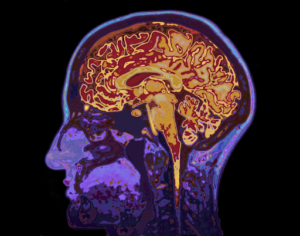Social neuroscience: Undoing the schism between neurology and psychiatry
Social Neuroscience
Ibáñez, A. García, A. M., Esteves, S., Yoris, A., Reynaldo, L., Pietto, M., Adolfi, F. & Manes, F. (2018). Social neuroscience: Undoing the schism between neurology and psychiatry. Social Neuroscience 13(1), 1-39. Online: http://bit.ly/2dy7p6N.
En este trabajo proponemos una aproximación dimensional y transnosológica de la neurociencia social en las enfermedades psiquiátricas y neurológicas, particularmente en el ámbito de las emociones, la empatía, la llamada teoría de la mente, la cognición moral y la evaluación ecológica y contextual de la cognición social. Proponemos un programa de investigación y formación basado en la neurociencia social para la neuropsiquiatría.
Para acceder al artículo hacé click AQUÍ
Social neuroscience: Undoing the schism between neurology and psychiatry
Social Neuroscience
Ibáñez, A. García, A. M., Esteves, S., Yoris, A., Reynaldo, L., Pietto, M., Adolfi, F. & Manes, F. (2018). Social neuroscience: Undoing the schism between neurology and psychiatry. Social Neuroscience 13(1), 1-39. Online: http://bit.ly/2dy7p6N.
Multiple disorders once jointly conceived as “nervous diseases” became segregated by the distinct institutional traditions forged in neurology and psychiatry. As a result, each field specialized in the study and treatment of a subset of such conditions. Here we propose new avenues for interdisciplinary interaction through a triangulation of both fields with social neuroscience. To this end, we review evidence from five relevant domains (facial emotion recognition, empathy, theory of mind, moral cognition, and social context assessment), highlighting their common disturbances across neurological and psychiatric conditions and discussing their multiple pathophysiological mechanisms. Our proposal is anchored in multidimensional evidence, including behavioral, neurocognitive, and genetic findings. From a clinical perspective, this work paves the way for dimensional and transdiagnostic approaches, new pharmacological treatments, and educational innovations rooted in a combined neuropsychiatric training. Research-wise, it fosters new models of the social brain and a novel platform to explore the interplay of cognitive and social functions. Finally, we identify new challenges for this synergistic framework.
To access the full paper please click here



